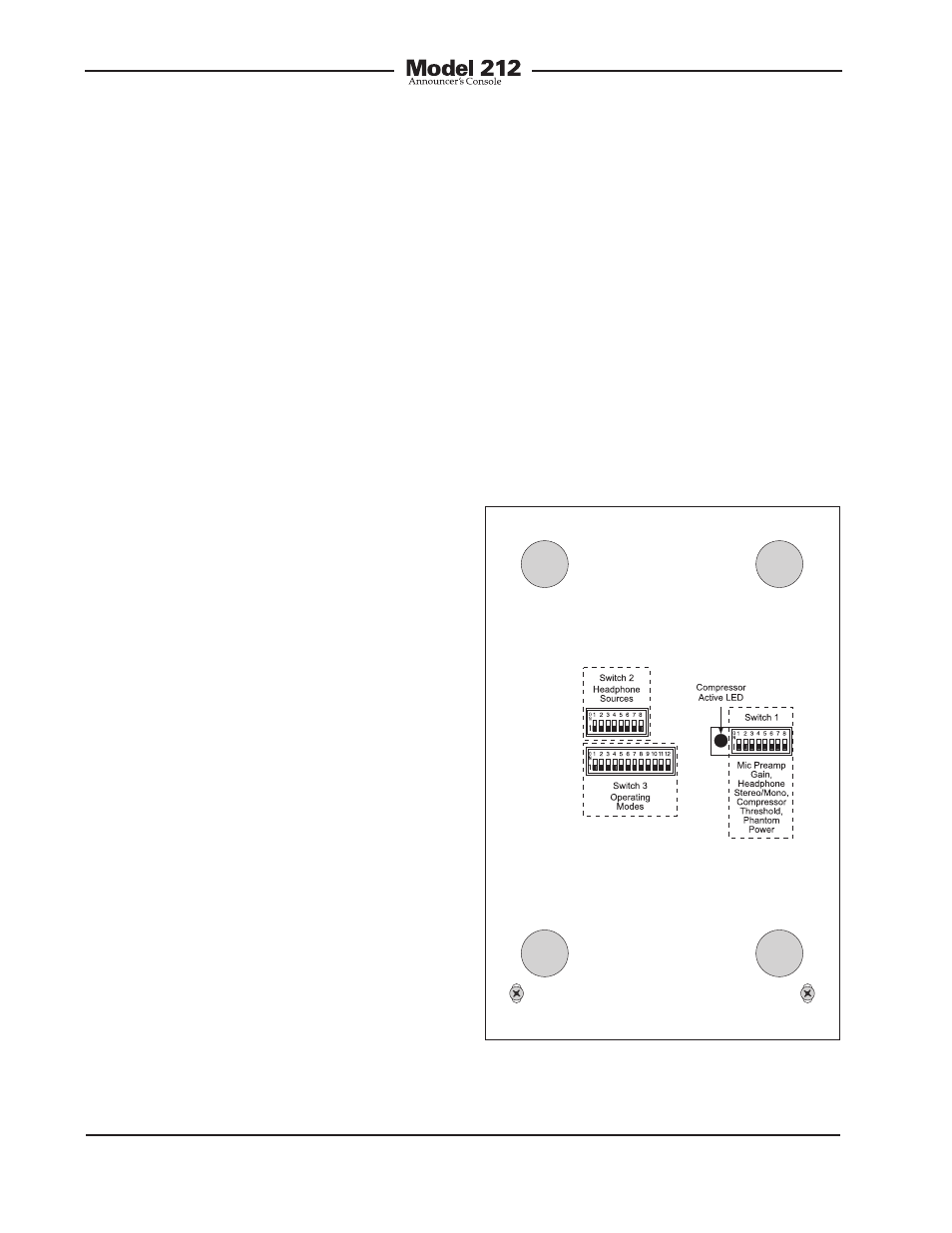Configuration, Configuration – Studio Technologies 212 2013 User Manual
Page 15

Model 212 User Guide
Issue 5, May 2013
Studio Technologies, Inc.
Page 15
out with a pair of scissors or an X-ACTO®
knife following the printed guide lines that
indicate the required size.
The clear lens on top of each button cap
can be removed with a fingernail or small
screwdriver. Be certain not to scratch the
button if a screwdriver or other small tool
is used. The clear label can be removed
and replaced. The button cap is then
snapped back into the top of the button
housing using finger-pressure only. No
tool is required to replace the button cap.
If you need to make your own labels the
process is quite simple. Use a personal
computer to create the desired text. The
finished label size should be 0.625-inches
(15.8 mm) square. The completed artwork
can then be printed on transparency film
sheets using a laser or inkjet printer. These
sheets are readily available from most
office supply stores. A pair of scissors or
an X-ACTO knife will complete the task.
Configuration
For the Model 212 to support the needs of
specific applications a number of operat-
ing parameters must be configured. These
include microphone preamplifier gain,
phantom power on/off, headphone cue
source selection, headphone stereo/mono
mode, and a number of operating modes.
Two 8-position and one 12-position DIP
switch assemblies are used to establish
the desired configuration. These switch
assemblies are referred to as Switch 1,
Switch 2, and Switch 3, with individual
switches designated as SW1-1, SW1-2,
etc. The switch assemblies are accessed
through openings in the bottom of the
Model 212’s enclosure. The enclosure
does not have to be disassembled to
gain access to the switches.
To prevent unauthorized personnel from
changing the configuration settings, a
security plate is attached to the bottom
of the Model 212’s enclosure. For conve-
nience, a settings guide is laser etched
into one side of the security plate. It pro-
vides a summary of the configurable pa-
rameters and related information. Refer to
Appendix A for a representative view of the
text. The security plate is held in place by
means of four rubber bumpers (“feet”) that
have built-in screws. Using your fingers,
remove the four bumpers so that the plate
can be removed. Refer to Figure 3 for a
detailed view of the configuration switch
assemblies.
Figure 3. Bottom view of Model 212 showing
configuration switches and compressor active
LED
